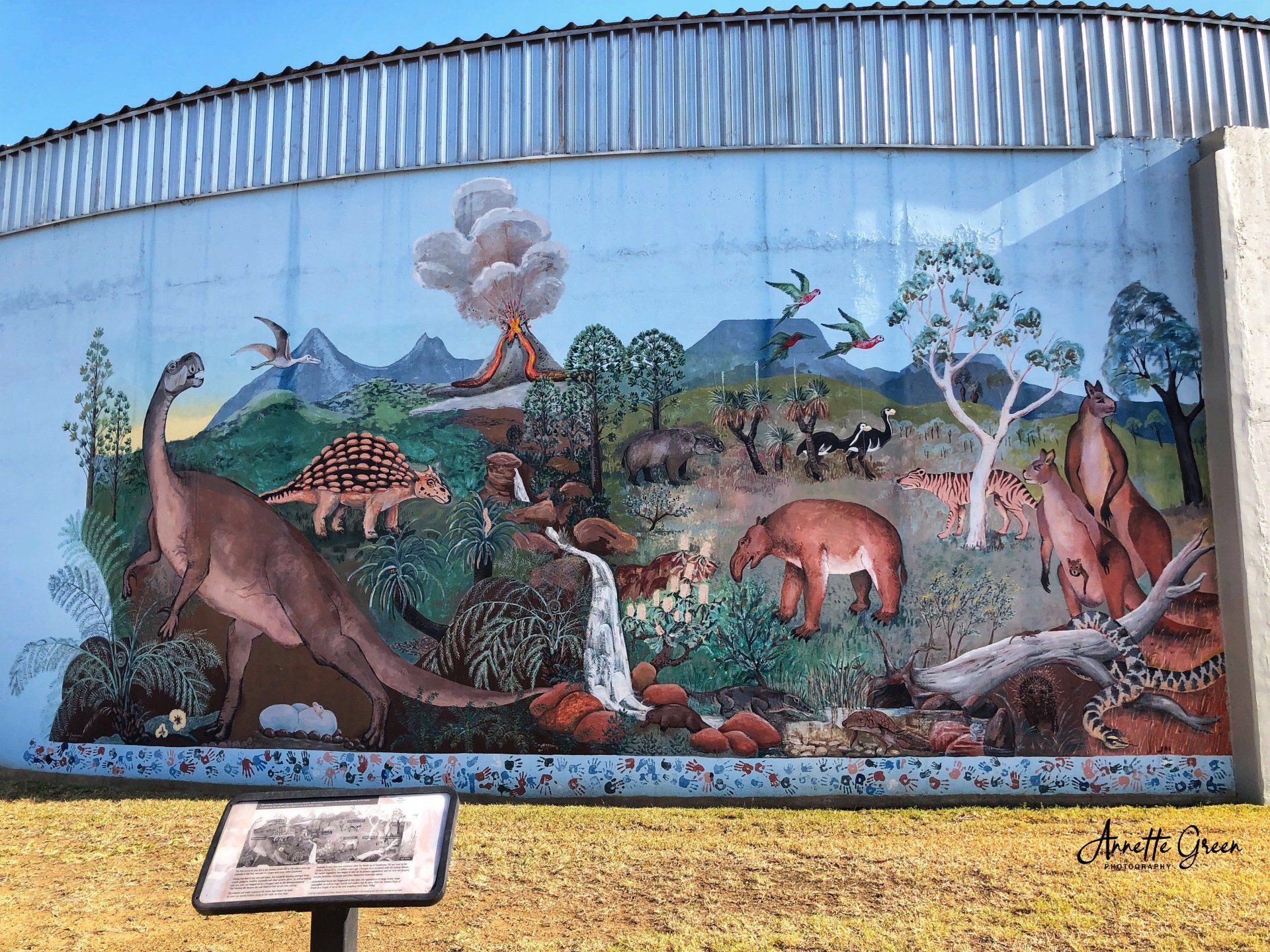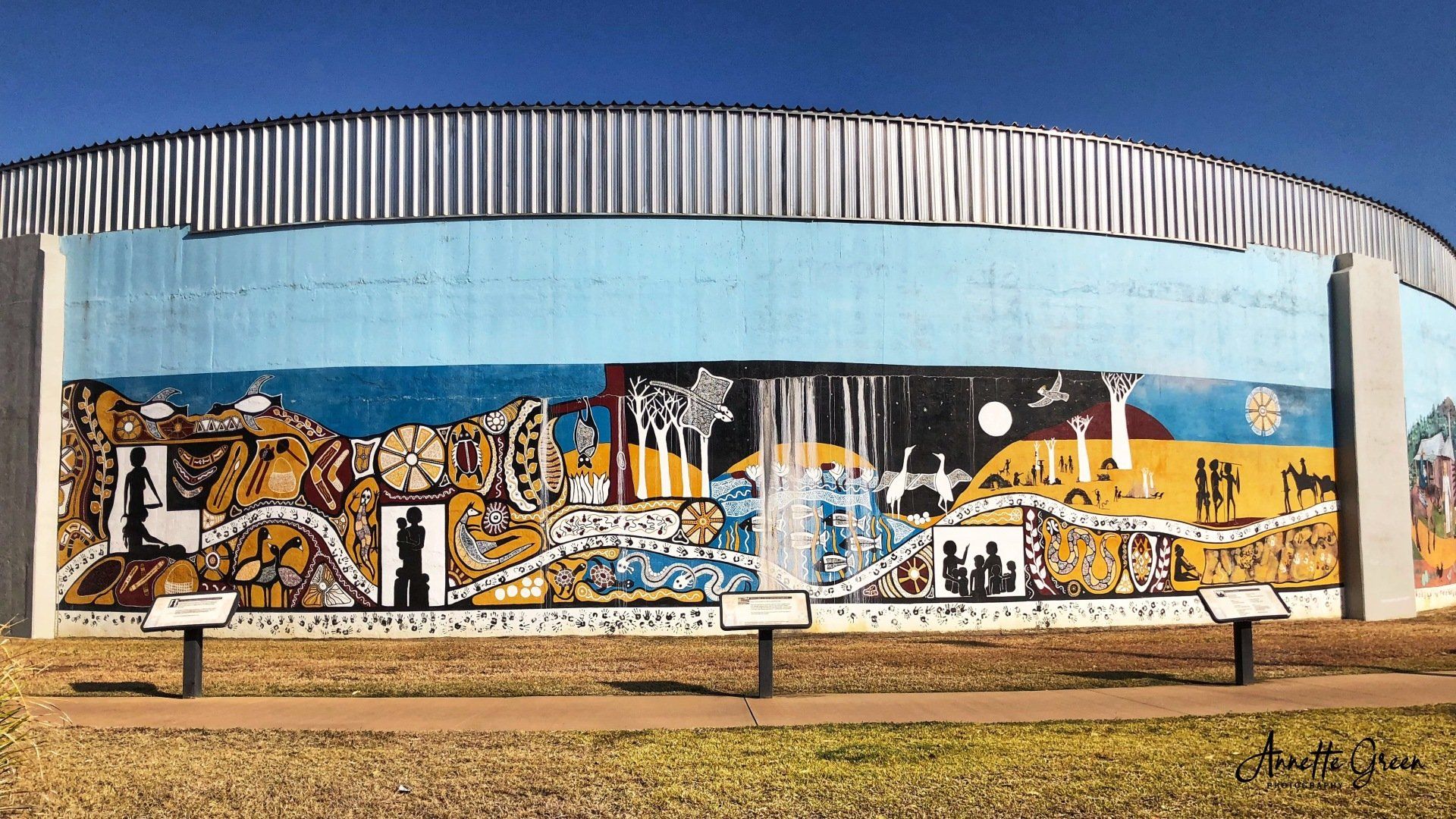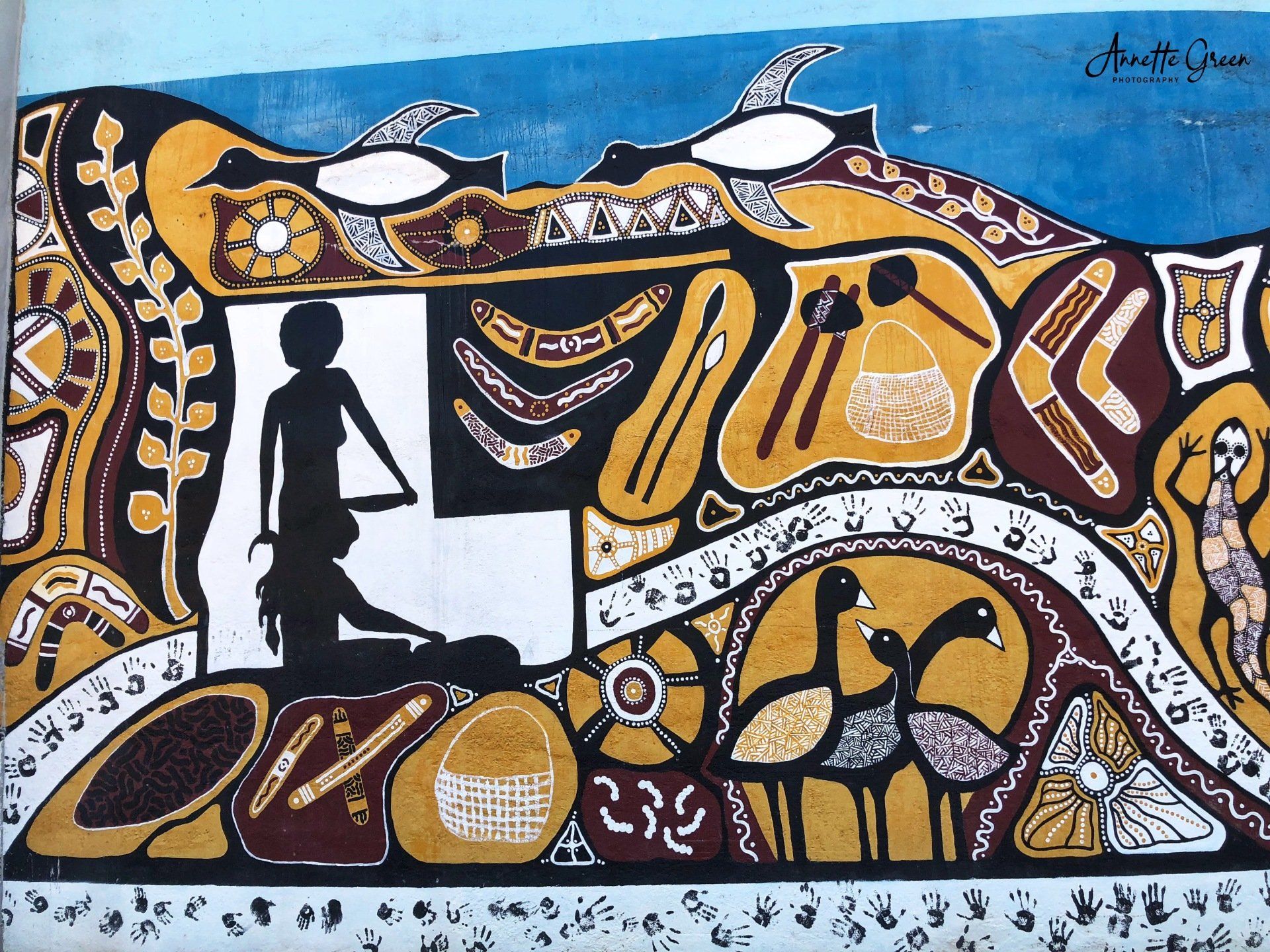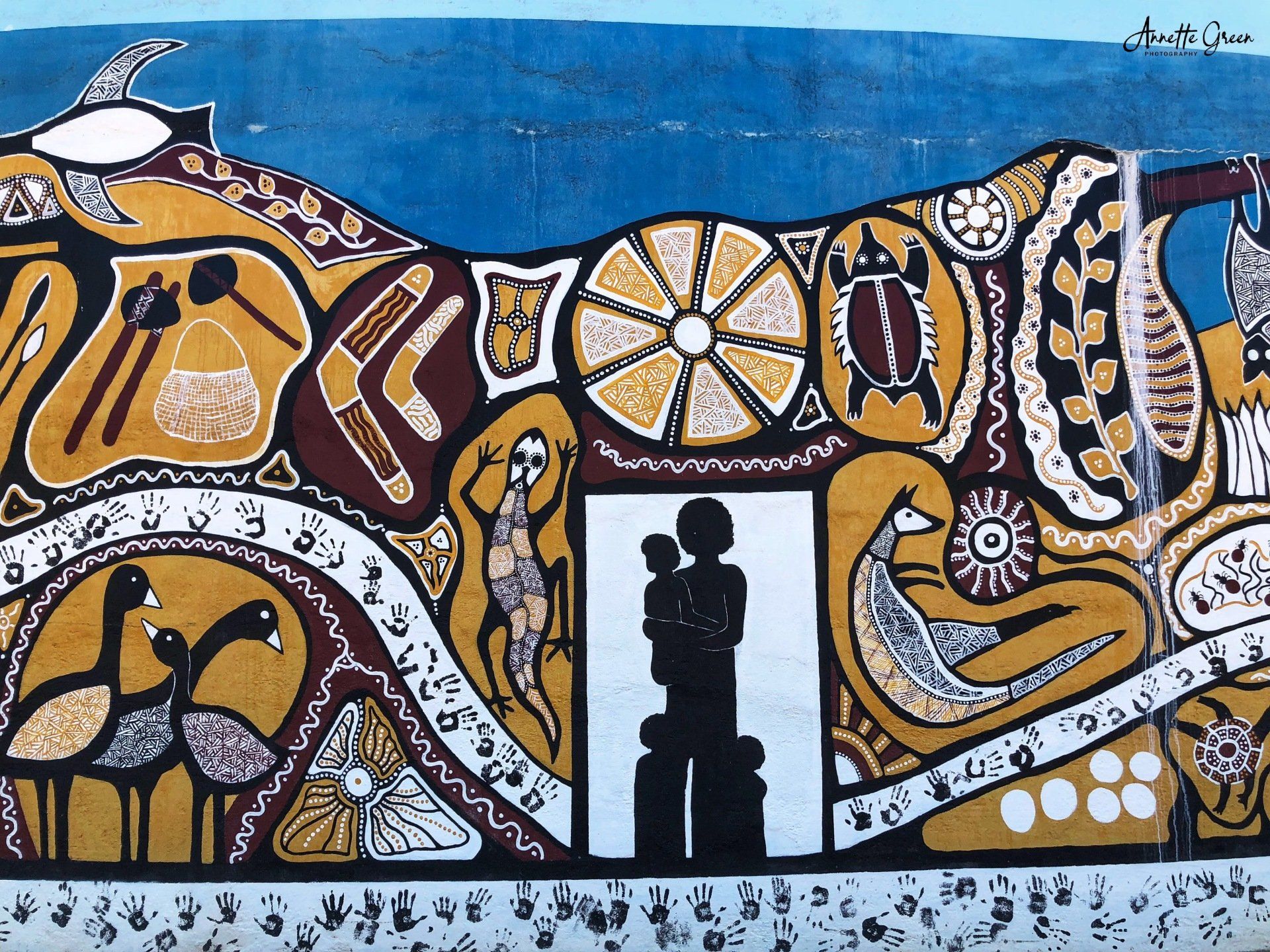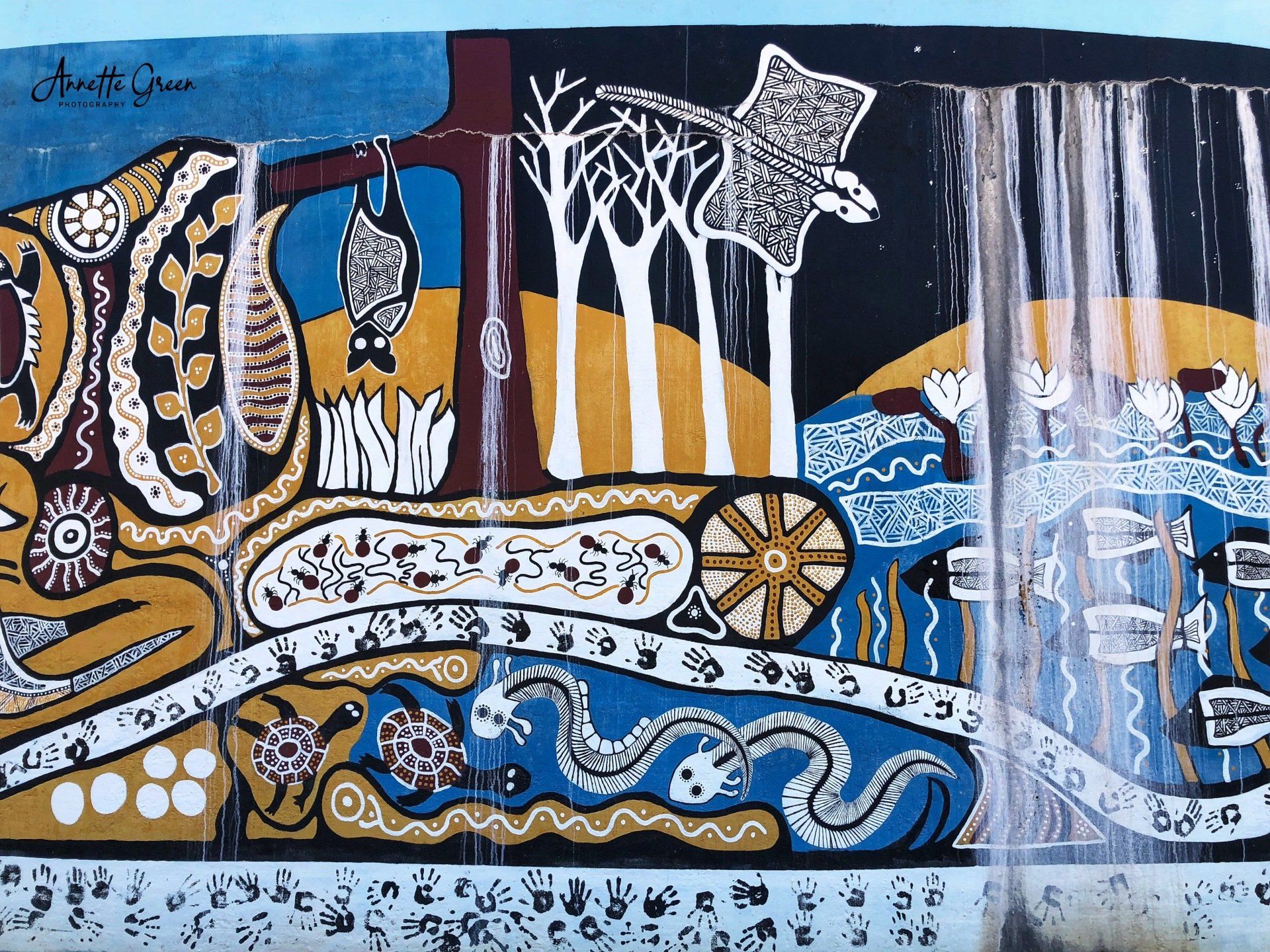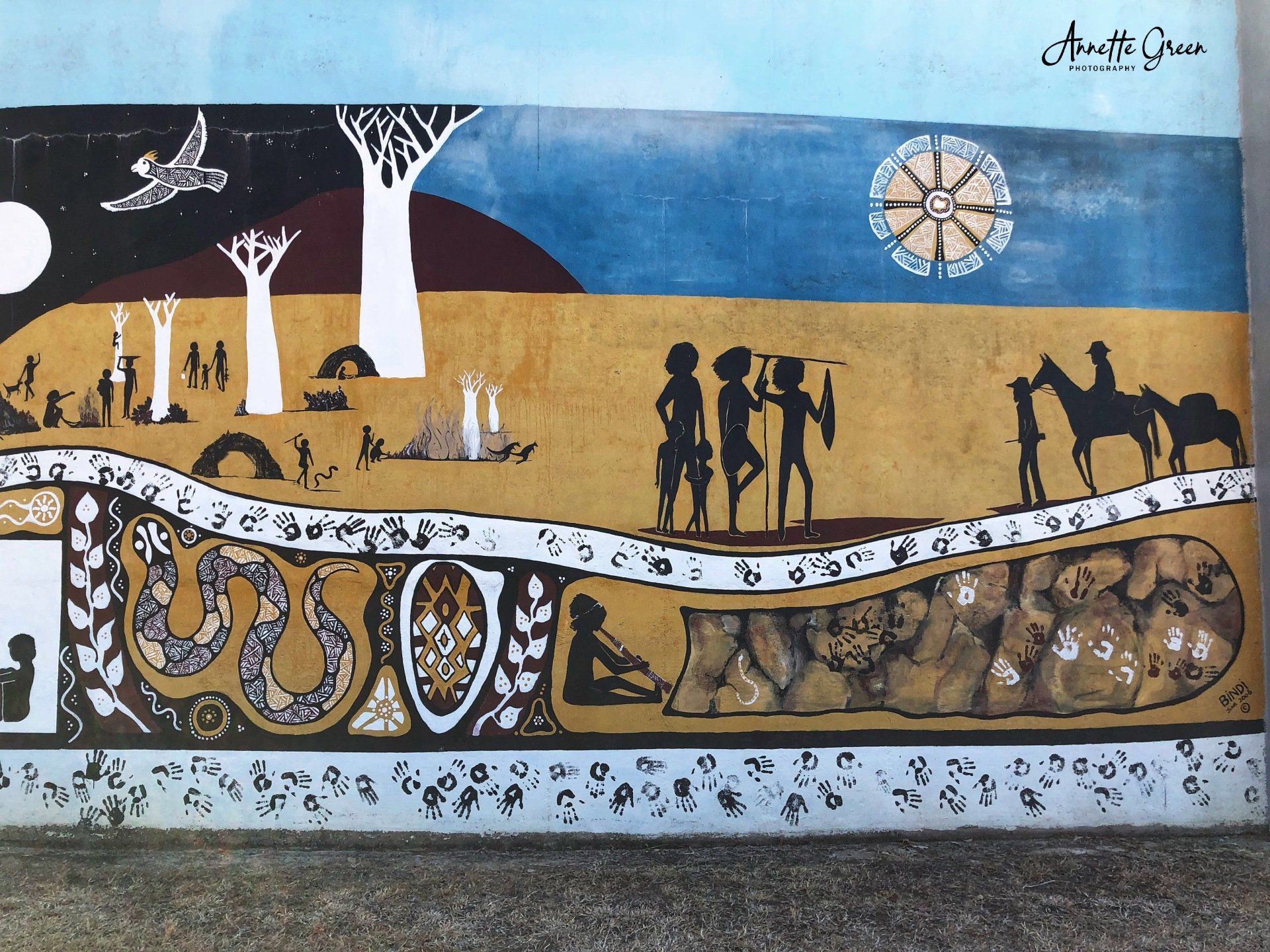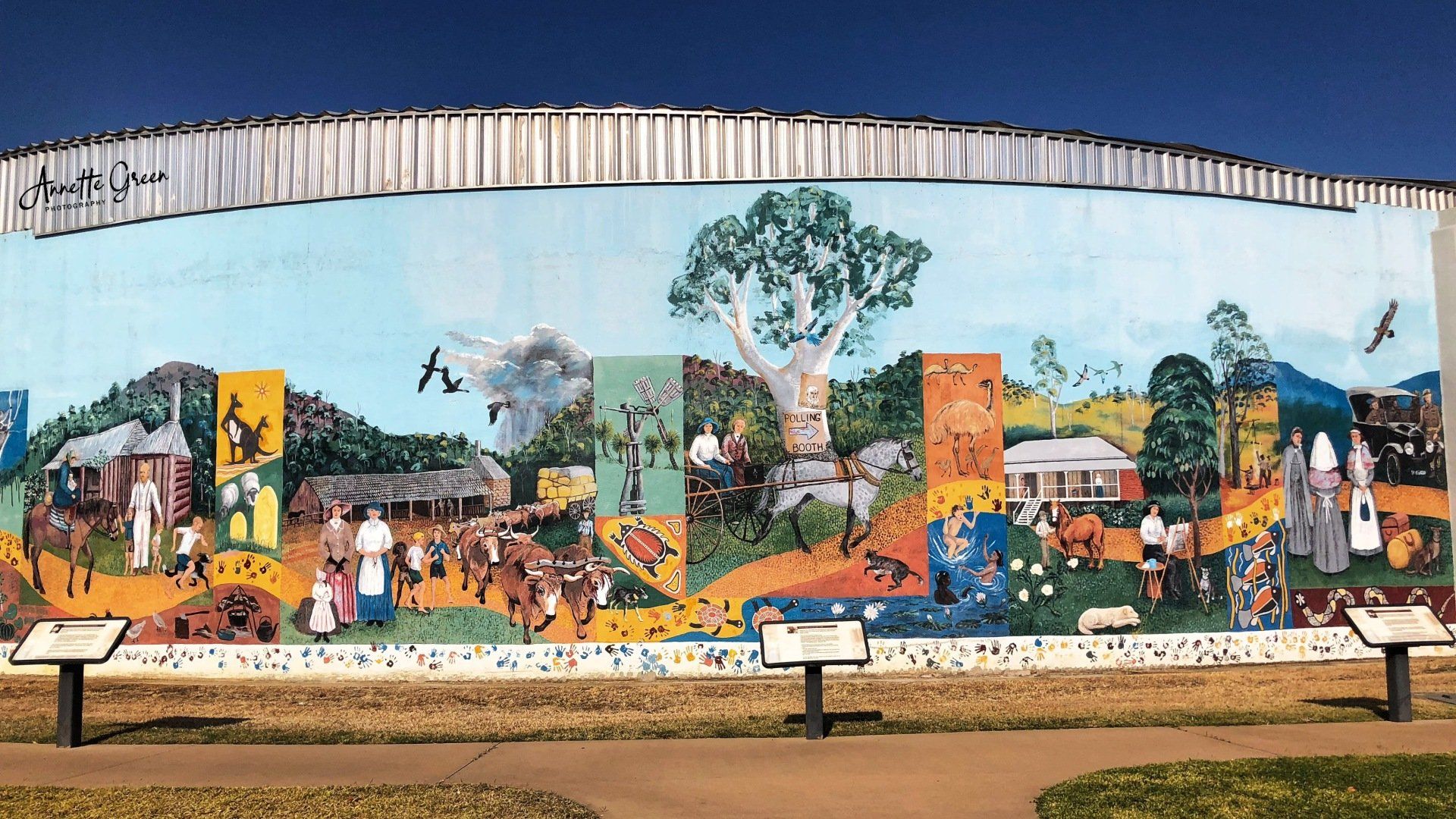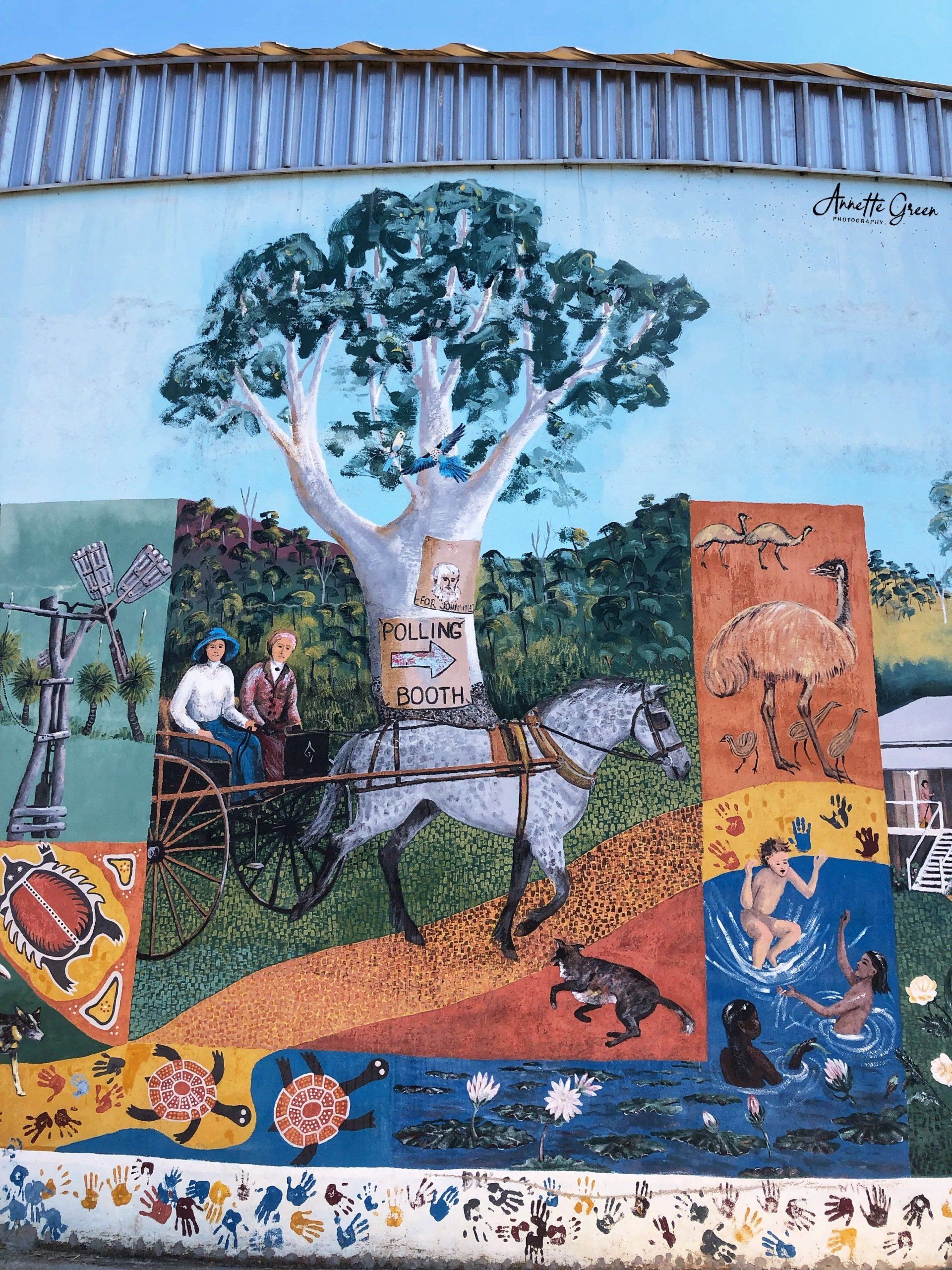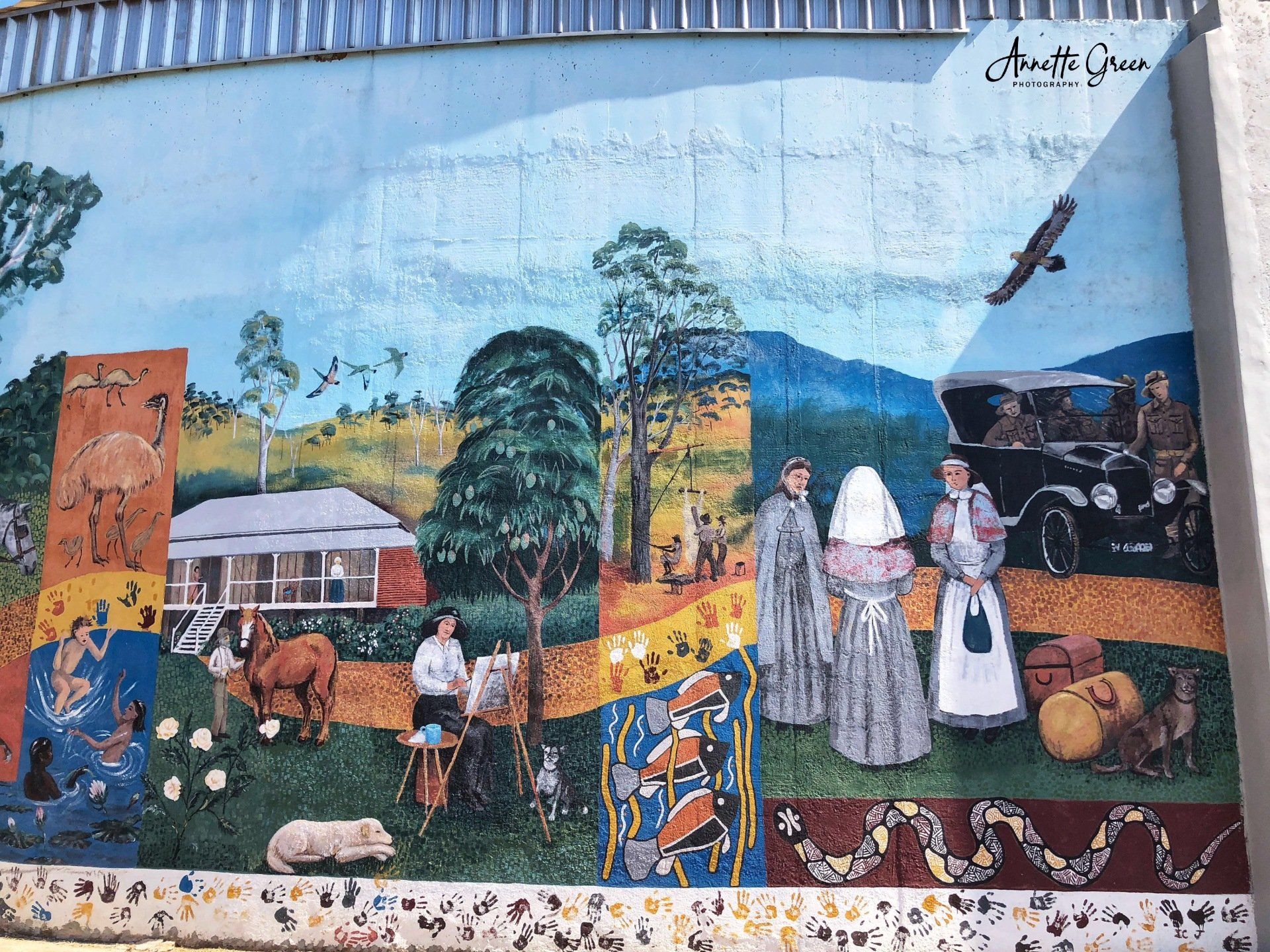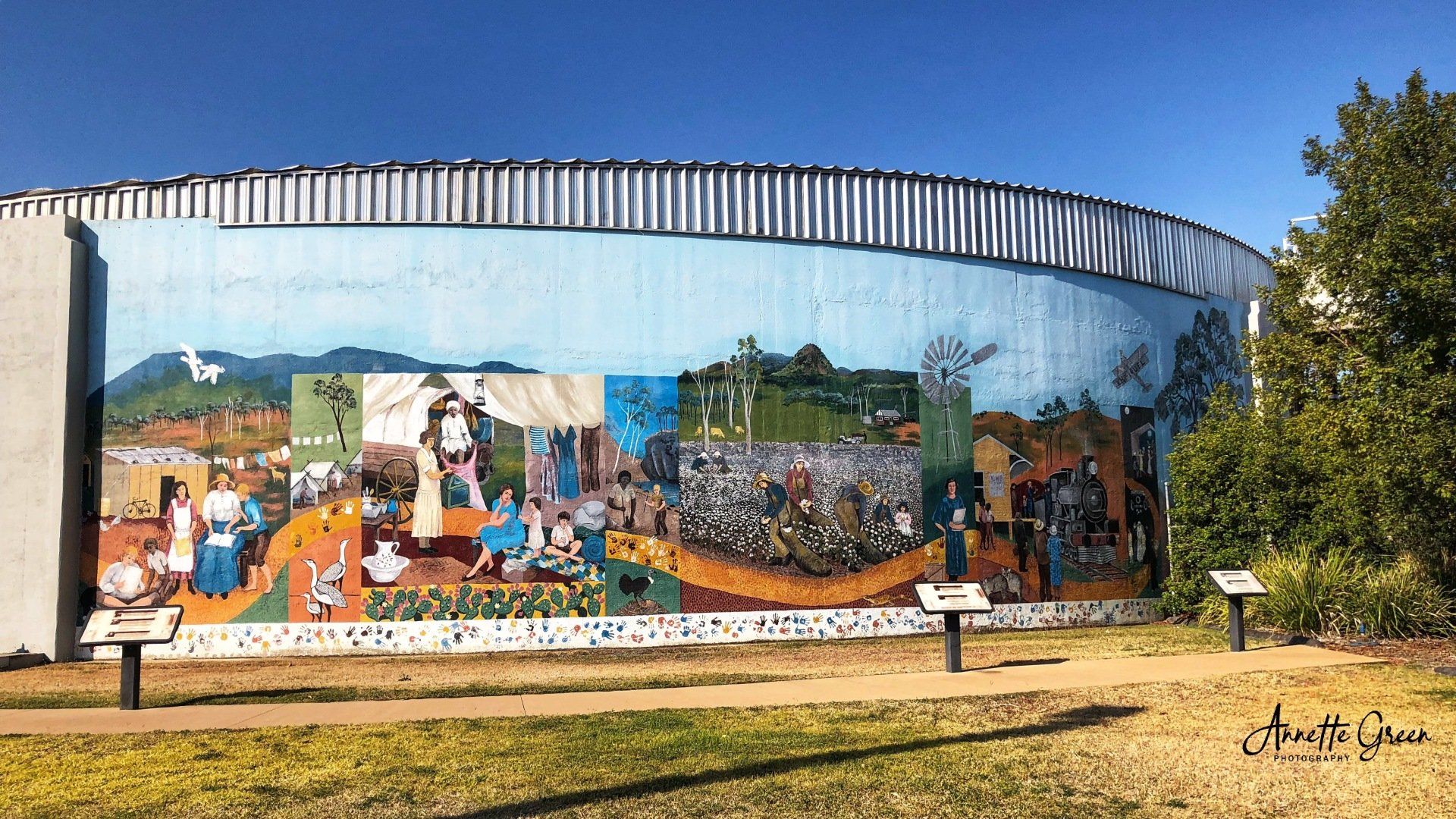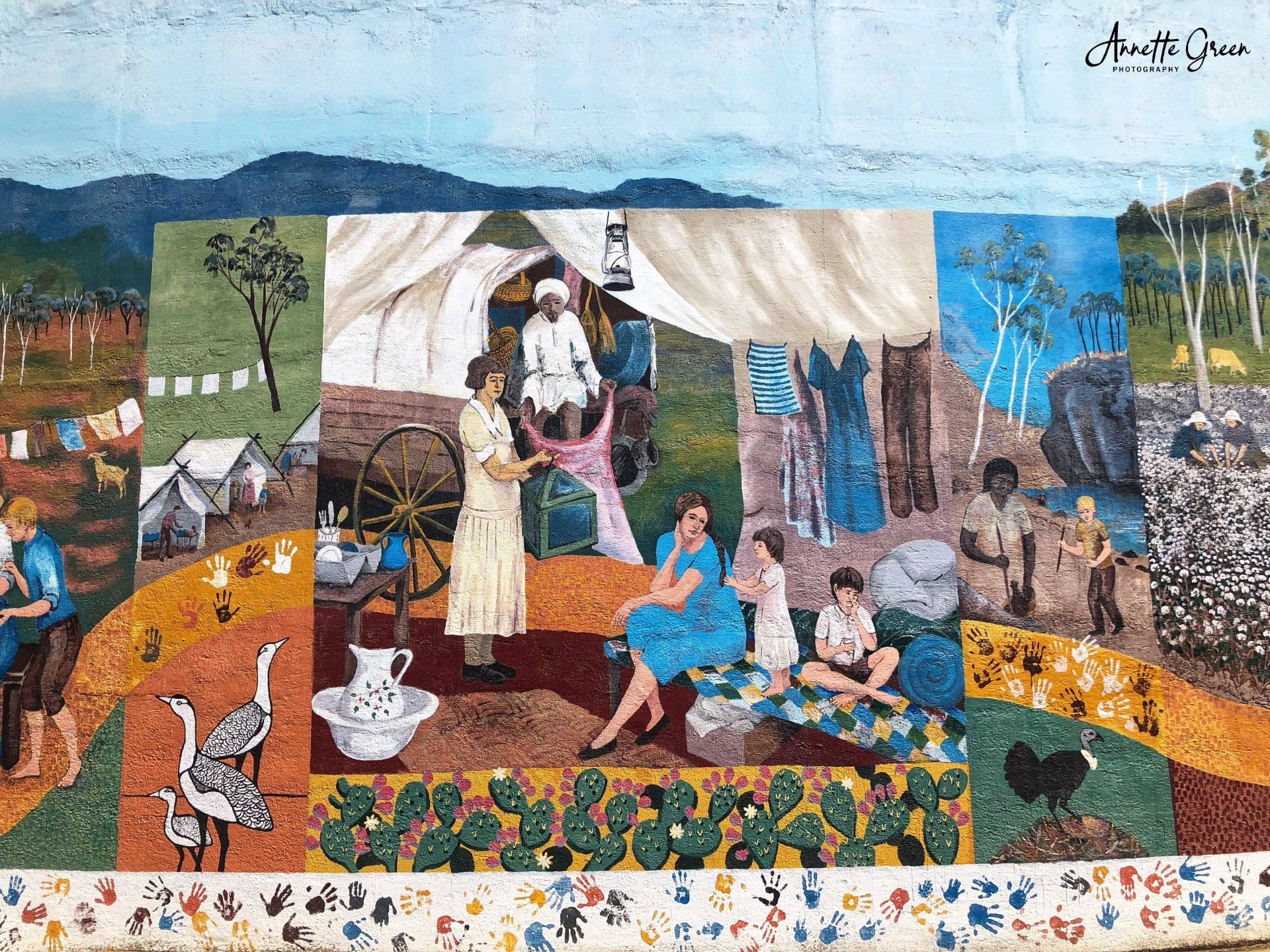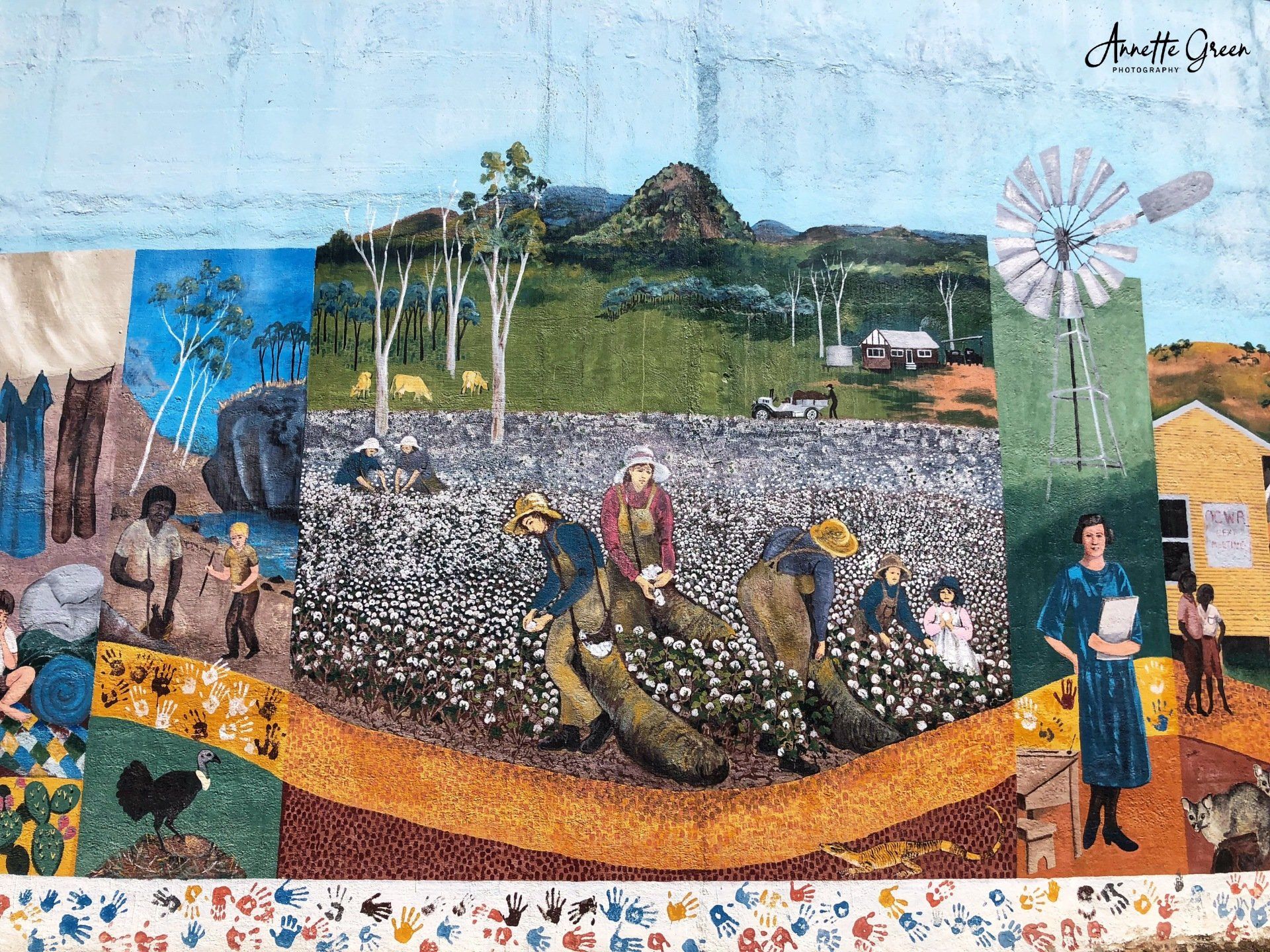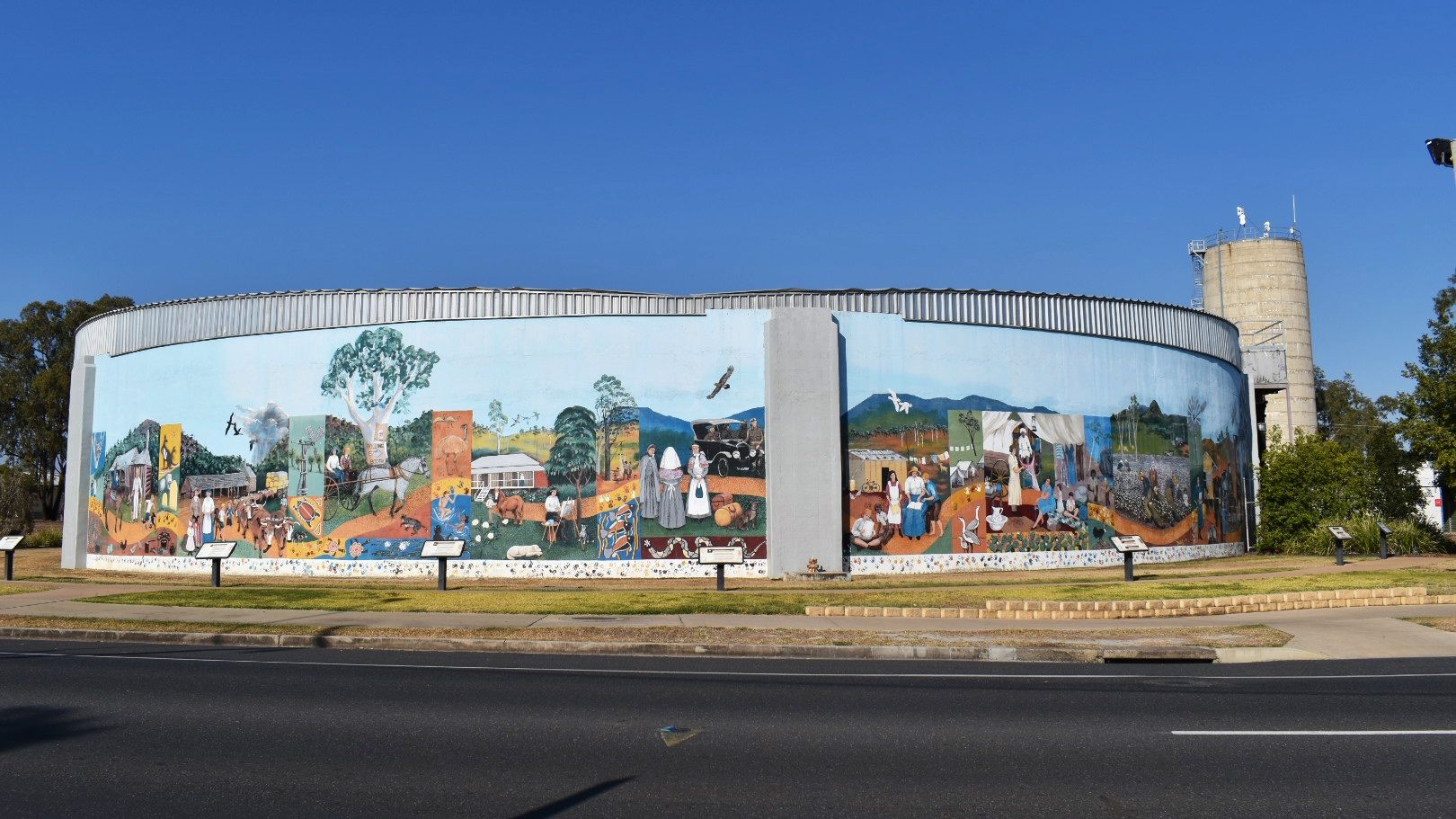
Photo by: ASAT
Biloela Water Tank Art - Queensland
Artists: Various Artists
Location: 6 State Farm Road, Biloela, QLD
It's hard to fathom the sheer size of this water tank by just viewing these photos. I'm not 100% sure on its actual size but would guess that each of the four sections visible would be at least 8 meters long with another 40% behind unpainted.
Section 1
Starting from the left the tank portrays the beginning of time with the Jurassic period 208 to 114 million years ago. Australia at this time was part of a larger land mass called Gondwana. During this time it was wet and warm. You would be standing amongst ferns, cycads, ginkgoes, conifers, horsetails and other ancient plants. As well as making sure you were not stepped on by a dinosaur such as the Muttaburrasaurus. This teeming life became the coal reserves we are mining today.
As you eye moves further to the right, so does the passage of time. Australia is now her own continent after the break up of Gongwana. We are now in the Tertiary Period 65 to 1.6 million years ago. Changes have occurred with the drying climate; native vegitation has begun to take on its present appearance and we now have see grasses, acacias, banksias, eucalypts and other distinctive Australian plants.
A mysterious trend also happened at this time, the appearance of mega fauna. Large marsupials as well as huge lizards and snakes can be seen. Note the Demon Duck of Doom at a height of up to 3m and weighing more than 500 kg.
Section 2
Indigenous Beginnings. Callide Valley is the homeland of the Gangulu. Neighbours to the Gangulu are the Wadja, the Iman, the Wulli Wulli and the Wakka Wakka.
These people lived in harmony with the land and were intimately aware of its delicate balance. Their diet largely consisted of food gathered by women accompanied by their children. Gathering food required a great deal of plant and animal knowledge, as well as the knowledge of growing seasons. Gathering the right amount was also critical to ensure a constant supply.
Aboriginal people have a very complex and sophisticated social structure that is guided by legend and ritual. Kinship is the way they explain the relationships between people and this is very different from the way Europeans describe relationships. For example a local Iman woman has more than one father and mother. A person is grouped according to generations, this is a father and his brothers might all be called father, and a mother and her sisters might all be called mother.
Section 3
Knowing another's culture is the fastest way to friendship. On Christmas Day 1861 the first white child in the valley was born at Prairie Homestead to Catherine O'Reilly. She named her daughter Margaret.
Through the curiosity and thoughtfulness of black women, in their assistance with child birth and knowledge of bush remedies to treat injuries and illness, white women began to appreciate black women and befriended them.
In 1874, at Six Mile hut, William Rideout and his wife Margaret reared their large family of eight children. When baby Bert became ill Margaret, carrying Bert and riding sidesaddle, rode three days to the boat at Gladstone, from there to Rockhampton to a doctor and hospital. he survived. There are many such stories, often with not a happy ending, as the graves and headstones throughout the valley bear testimony. Many children just babies dies with outbreaks of Typhoid and Diphtheria; snakebite and accidents also took their toll.
As time passed women won the right to vote in 1910 and the impact of war in 1914 was felt at home.
Section 4
Educating children in 1920 was yet another role women filled, with black children also attending their classes. Lessens were given when ever it was convenient under the shade of a tree.
Following the war years in 1923, large established holding were resumed and divided for closer settlement. Once again women and men found themselves living in makeshift homes of canvas and humpies made of hessian bags and corrugated iron. Kerosene tins and meat safes were part of their almost subsistence living. All food was cooked over an open fire; there was excitement when a hurricane lamp was bought home.
With the clearing of the best fertile land to grow cotton, came thick stands of the curse, prickly pear. Fortunately research found that natural control in the Cactoblastis Moth and slowly the awful pest was eradicated.
By 1925 small townships began to grow. At some railway stations, a station mistress would step forward with flag and whistle to monitor noisy traffic with authority. The arrival of a steam train was a most exciting event.
Cars were becoming plentiful but still many from the country rode or came in sulky or buggy to the busy township. Some were lucky enough to see their first aero plane in the sky.
Parking Information
This tank is down a quiet side street. The road is wide with available roadside parking suitable for all sized vehicles.

